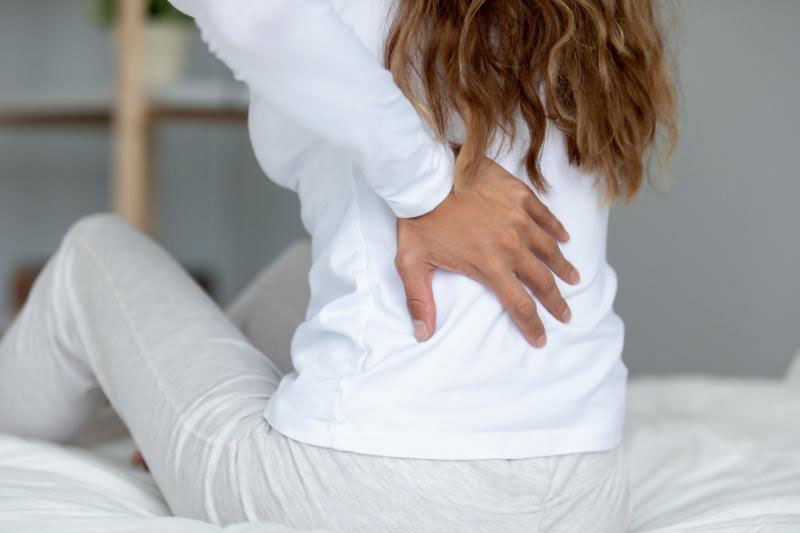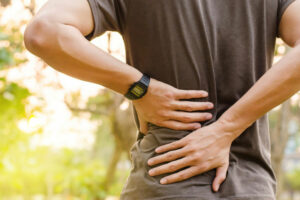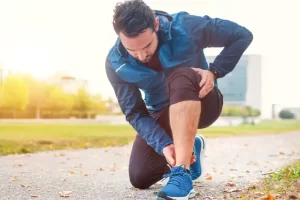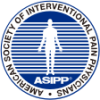Spinal stenosis is a condition that touches the lives of most people by the age of 50. It doesn’t discriminate – both men and women can experience its challenges, especially between the ages of 50 and 70. Spinal stenosis can affect younger individuals too, especially if they have naturally narrow spinal canals or have prior spinal injuries. This widespread occurrence is due to a variety of causes, with aging being the leading factor. At Ponte Vedra Spine & Pain Center, we recognize spinal stenosis isn’t just a condition; it is an experience. Navigating it with support, empathy, and the right information can make a huge difference.
What Exactly is Spinal Stenosis?
Spinal stenosis is a condition that affects a vast majority of people, with varying degrees of stenosis occurring in about 95% of individuals by the age of 50. Spinal stenosis happens when the space around the nerves or spinal cord narrows, potentially applying pressure on these crucial components. This compression often triggers symptoms like pain, tingling, numbness, and muscle weakness. Stenosis (narrowing) can develop in various parts of the spine, including the cervical, thoracic, and lumbar regions, but it is most common in the lower back (lumbar) and neck (cervical). This degenerative ailment typically starts slowly, gradually worsening over time as the narrowing intensifies. Essentially, spinal stenosis boils down to a “space issue” where nerves compete with bones and soft tissues (like ligamentum flavum) for room. Unfortunately, the nerves usually end up on the losing side.
Three types of spinal stenosis treated at Ponte Vedra Spine & Pain Center in Ponte Vedra, FL include:
- Foraminal Stenosis: Narrowing occurs in the small openings that allow nerve roots to exit the spinal column
- Lateral Recess Stenosis: Narrowing occurs in the back of the spinal canal where the nerve roots initially branch off
- Central Canal Stenosis: Narrowing occurs in the main central spinal canal, which protects the spinal cord
Understanding spinal stenosis is key to finding the right treatment and support. With this knowledge, it enables both you and Dr. Loch to make informed decisions, ensuring the best care and enhancing your overall quality of life. This knowledge empowers you, making it easier to navigate your health journey with confidence.
What Causes Spinal Stenosis and Why is it So Common?
Spinal stenosis is a condition with multiple potential causes, which contribute to its widespread occurrence. Aging, a universal aspect of human life, stands out as the primary risk factor behind this disorder. As people age, other degenerative changes in the spine, such as arthritis and herniated discs, increase the likelihood of developing spinal stenosis. Beyond aging, various other factors can lead to the development of this condition.
Common causes of spinal stenosis can include:
- Bone Spurs Formation: Bone spurs, or osteophytes, develop as abnormal bony growths on the edges of bones. In the context of spinal stenosis, these spurs can narrow the spaces within the spine, putting pressure on nerves and causing discomfort.
- Intervertebral Disc Bulging or Herniation: When the discs between your vertebrae bulge or herniate, they can impinge on spinal nerves, contributing to spinal stenosis.
- Spinal Ligament Thickening: Thickening of the ligaments in the spine can reduce the space around nerves, leading to spinal stenosis.
- Facet Joints Breakdown or Hypertrophy: Facet joints, responsible for stabilizing the spine, can undergo breakdown or hypertrophy, causing them to enlarge. This enlargement can encroach upon nerve space, contributing to spinal stenosis.
- Facet Joint Cysts: Cysts within facet joints can compress the nerves in the spinal sac, contributing to spinal stenosis. These cysts often develop due to degeneration or fluid accumulation within the joints.
- Degenerative Disk Disease: Degenerative disk disease refers to the natural wear and tear of spinal discs over time. As discs degenerate, they lose height, reducing the space between vertebrae and potentially causing spinal stenosis.
Recognizing how each condition impacts spinal stenosis is crucial, especially considering how common this condition is. At Ponte Vedra Spine & Pain Center, we recognize the significance of personalized care, honing in on the specific causes of your spinal stenosis. This tailored approach leads to a more effective diagnosis and treatment, ensuring you receive the best possible care on your path to a pain-free life.
What Are The Symptoms of Spinal Stenosis and How is it Diagnosed?
Symptoms of spinal stenosis will vary by location and other individual factors, however, there are many blanket symptoms that all types share.
Common symptoms of spinal stenosis can include:
- Pain in the arms or legs
- Burning sensation
- Loss of fine motor skills
- Muscle weakness
- Discomfort while standing or walking
- Numbness in the arms or legs
- Balance difficulty
Pain while standing is the most common symptom, affecting almost 95% of cases.
At Ponte Vedra Spine & Pain in Ponte Vedra, FL, Dr. Loch uses a variety of diagnostic protocols to assess your symptoms, including:
Magnetic Resonance Imaging (MRI):
- Provides detailed images of spine’s soft tissues using magnetic fields and radiofrequency waves
- Clearly displays nerves and discs; detects nerve compression, bony growths, spinal tumors, or abscesses
- Contrast dye may enhance visibility, injected into the bloodstream if necessary
Myelogram:
- Specialized CT scan involving dye injection into the spinal canal through a spinal tap
- Visualizes pinched nerves from herniated discs, bony growths, spinal cord tumors, or abscesses
- White dye on X-rays provides detailed views; followed by a CT scan
Computed Tomography (CT) Scan:
- Creates 2D spine images using X-ray beams and a computer
- Valuable for assessing bony changes; contrast dye may be used for enhanced imaging
Doppler Ultrasound:
- Noninvasive test using reflected sound waves to evaluate blood flow in blood vessels
- May be performed to rule out peripheral artery disease as a cause of painful leg symptoms
How is Spinal Stenosis Treated?
For many cases of spinal stenosis, a blend of nonsurgical approaches like physical therapy, activity adjustments, self-care, and epidural injections can be effective. However, in situations where severe pain or neurological issues persist despite these efforts, surgery might become a consideration.
Common treatments of spinal stenosis can include:
At-Home Care:
- Heat Application: Heat is often beneficial for osteoarthritis pain as it boosts blood flow, relaxing muscles and easing joint discomfort. However, use caution; excessive heat can cause burns.
- Cold Therapy: If heat doesn’t provide relief, consider using ice, like an ice pack or frozen gel pack. Apply it for 20 minutes on and 20 minutes off. Cold therapy can help to reduce swelling, tenderness, and inflammation.
- Exercise Benefits: With your healthcare provider’s approval, engaging in regular exercise can alleviate pain. It can strengthen muscles, provide better support for your spine, and enhance flexibility and balance.|
Nonsurgical Treatments:
- Oral Medications: Nonsteroidal anti-inflammatory drugs (NSAIDs) available over-the-counter can reduce inflammation and alleviate pain. Prescription medications such as gabapentin or amitriptyline might be recommended, especially for muscle cramps or spasms.
- Physical Therapy: Working with a physical therapist can create a tailored exercise plan, enhancing your strength, balance, flexibility, and spine stability. Strengthening your back and core muscles can make your spine more resilient. Therapists can also teach techniques to alleviate pressure on spinal nerves.
- Steroid Injections: Corticosteroid injections around pinched spinal nerves can decrease inflammation, easing pain and irritation.
While there might not be a one-size-fits-all solution or a cure for spinal stenosis, please know that your well-being is our utmost priority. If your pain becomes severe, hindering your ability to move freely and enjoy life, Dr. Loch may discuss surgical options tailored to alleviate your suffering and restore your mobility. Your journey towards relief and improved mobility is our shared focus, and we are here to support you every step of the way.
Can I Prevent Spinal Stenosis?
Given that most spinal stenosis cases result from age-related wear and tear, complete prevention is challenging. However, adopting specific practices can promote spinal health, potentially reducing risks and slowing its progression.
Common prevention practices of spinal stenosis at Ponte Vedra Spine & Pain Center in Ponte Vedra, FL include:
- Balanced Diet: Ensure adequate calcium intake for strong bones.
- Healthy Weight: Maintain a weight suitable for your body to reduce strain.
- Quit Smoking: Smoking damages arteries, worsening back pain and hindering healing.
- Good Posture: Practice proper posture to support your spine.
- Regular Exercise: Strengthen back and core muscles through regular exercise for overall spine health.
Compassionate Care, Lasting Relief: Spinal Stenosis Pain Management in Ponte Vedra, FL
Navigating spinal stenosis can be challenging, but at Ponte Vedra Spine & Pain Center, we offer empathetic support and personalized care tailored to your unique needs. Every recovery journey is different, yet significant progress is achievable. To embark on the path to a pain-free life, schedule an appointment with Dr. Eli Loch today!









